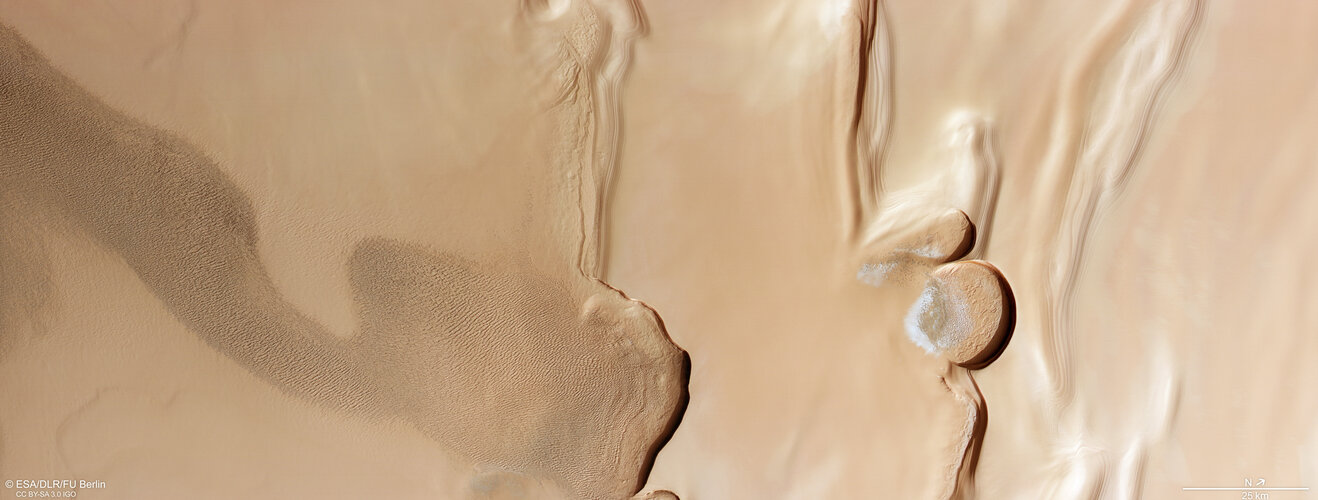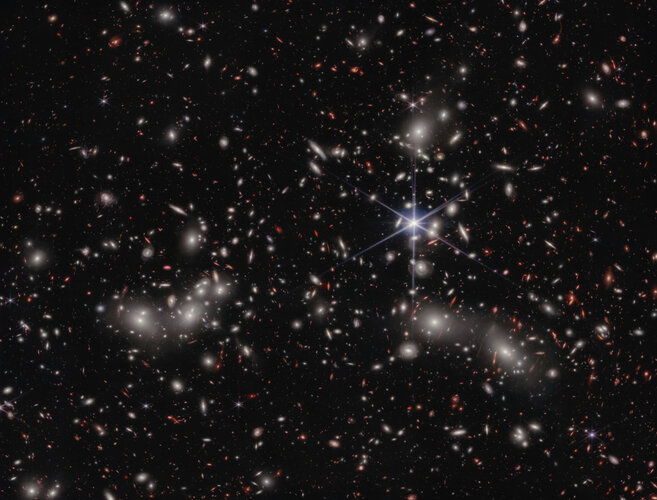
Copernical Team
Earth as a test object
 Life is indeed possible on Earth. This has been demonstrated in a study conducted by the Institute of Particle Physics and Astrophysics at ETH Zurich. Of course, the researchers' intention wasn't to answer the question itself. Instead, they used the Earth as an example to prove that the planned LIFE (Large Interferometer for Exoplanets) space mission can be a success - and that the planned measu
Life is indeed possible on Earth. This has been demonstrated in a study conducted by the Institute of Particle Physics and Astrophysics at ETH Zurich. Of course, the researchers' intention wasn't to answer the question itself. Instead, they used the Earth as an example to prove that the planned LIFE (Large Interferometer for Exoplanets) space mission can be a success - and that the planned measu CUTE's groundbreaking design paves the way for future small-scale space missions
 NASA's innovative approach to studying the atmospheres of distant worlds has taken a significant leap forward with the Colorado Ultraviolet Transit Experiment (CUTE) mission. Since its launch in September 2021, CUTE has been pioneering the observation of exoplanets using a uniquely designed small spacecraft, marking a milestone in space exploration technology.
At the heart of CUTE's missio
NASA's innovative approach to studying the atmospheres of distant worlds has taken a significant leap forward with the Colorado Ultraviolet Transit Experiment (CUTE) mission. Since its launch in September 2021, CUTE has been pioneering the observation of exoplanets using a uniquely designed small spacecraft, marking a milestone in space exploration technology.
At the heart of CUTE's missio US Moon lander's battery likely has hours left: company
 An American lunar lander that tipped over during its historic touchdown last week likely only has hours left until its battery runs out, the private company operating it said Tuesday.
The uncrewed Odysseus, built by Houston-based Intuitive Machines, made the first return by a US craft to the Moon in five decades - and the first such successful mission by the private sector.
But one of t
An American lunar lander that tipped over during its historic touchdown last week likely only has hours left until its battery runs out, the private company operating it said Tuesday.
The uncrewed Odysseus, built by Houston-based Intuitive Machines, made the first return by a US craft to the Moon in five decades - and the first such successful mission by the private sector.
But one of t Odysseus moon lander mission cut short after botched landing
 The historic Odysseus moon landing mission was cut short Tuesday as flight controllers expected to lose contact with the private spacecraft after it toppled over during last week's botched landing.
Intuitive Machines, the Houston space company that built the unmanned Odysseus, said it planned to collect data "until the lander's solar panels are no longer exposed to light," which is two
The historic Odysseus moon landing mission was cut short Tuesday as flight controllers expected to lose contact with the private spacecraft after it toppled over during last week's botched landing.
Intuitive Machines, the Houston space company that built the unmanned Odysseus, said it planned to collect data "until the lander's solar panels are no longer exposed to light," which is two Korea simulates Moon's electrostatic surface conditions on Earth
 In a groundbreaking effort to simulate the Moon's unique surface environment, the Korea Institute of Civil Engineering and Building Technology (KICT) has successfully developed an electrostatic environment on Earth.
This pioneering research, led by Dr. Shin Hyusoung along with senior researcher Chung Taeil and Dr. Park Seungsoo, aims to replicate the
In a groundbreaking effort to simulate the Moon's unique surface environment, the Korea Institute of Civil Engineering and Building Technology (KICT) has successfully developed an electrostatic environment on Earth.
This pioneering research, led by Dr. Shin Hyusoung along with senior researcher Chung Taeil and Dr. Park Seungsoo, aims to replicate the Modi says India's first astronauts will inspire nation
 Indian Prime Minister Narendra Modi on Tuesday toasted the four astronauts preparing for the nation's first crewed orbital mission, saying the latest advance in spacefaring would inspire the next generation.
"The countdown of the rocket inspires thousands of children in India, and those making paper planes today dream of becoming scientists like you", Modi said.
The Gaganyaan - or "Skyc
Indian Prime Minister Narendra Modi on Tuesday toasted the four astronauts preparing for the nation's first crewed orbital mission, saying the latest advance in spacefaring would inspire the next generation.
"The countdown of the rocket inspires thousands of children in India, and those making paper planes today dream of becoming scientists like you", Modi said.
The Gaganyaan - or "Skyc HyImpulse readies SR75 rocket for historic maiden launch in Australia
 HyImpulse, a Germa-based rocket developer, is finalizing preparations for the maiden flight of its SR75 rocket, slated for late April to early May 2024 from the Koonibba Test Range in southern Australia. This launch will showcase a novel propulsion system that may redefine how rockets are transported and launched globally.
The SR75, a single-stage rocket, embodies a leap in propulsion tech
HyImpulse, a Germa-based rocket developer, is finalizing preparations for the maiden flight of its SR75 rocket, slated for late April to early May 2024 from the Koonibba Test Range in southern Australia. This launch will showcase a novel propulsion system that may redefine how rockets are transported and launched globally.
The SR75, a single-stage rocket, embodies a leap in propulsion tech Ariane 6: Arrives
 Video:
00:02:10
Video:
00:02:10
The largest components for the first flight model of Europe’s new rocket Ariane 6 arrived at the port of Pariacabo in Kourou, French Guiana on 21 February 2024 via the novel ship, Canopée (canopy in French).
The Ariane 6 stages and components are all manufactured across Europe. On this trip, Canopée brought the central core for Ariane 6’s first flight. The main engine and the main stage were integrated in Les Mureaux, France, while the upper stage and insulation for the rocket’s exterior were built up in Bremen, Germany.
The various Ariane 6 components are then offloaded and transported
Sand dunes meet stacked ice at Mars’s north pole

ESA’s Mars Express has captured an intriguing view near Mars’s north pole, imaging where vast sand dunes meet the many layers of dusty ice covering the planet’s pole.
Webb finds dwarf galaxies reionised the Universe

Using the unprecedented capabilities of the NASA/ESA/CSA James Webb Space Telescope, an international team of scientists has obtained the first spectroscopic observations of the faintest galaxies during the first billion years of the Universe. These findings help answer a longstanding question for astronomers: what sources caused the reionisation of the Universe?
